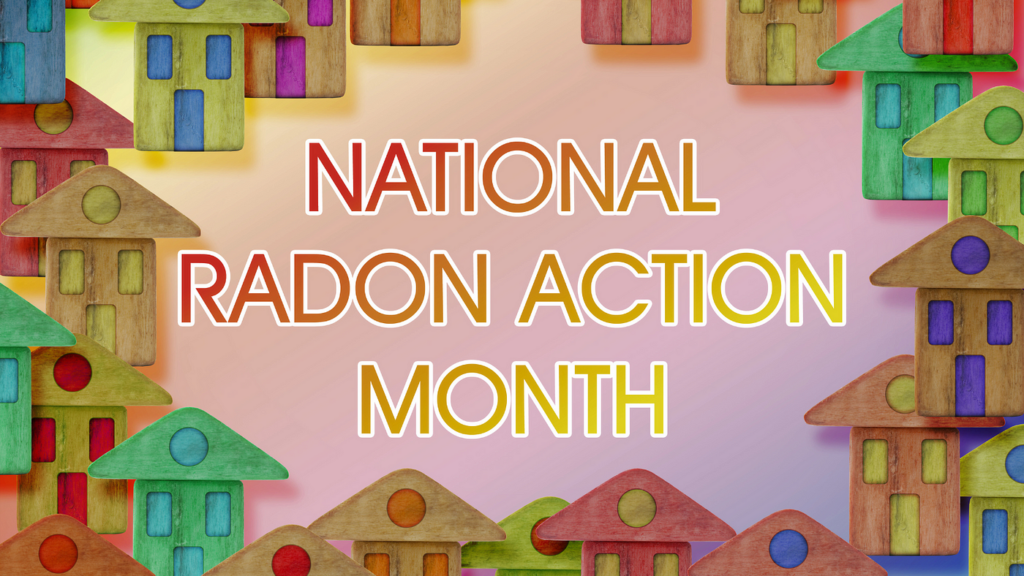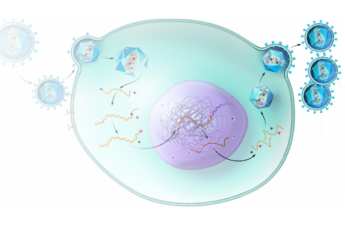
Washington State Department of Health
Home, sweet home. You love it there. But did you know your house may be exposing you and your family to dangerous levels of radon? Radon is a naturally occurring radioactive gas. We can’t see it, taste it, or smell it, but it is the leading cause of lung cancer among nonsmokers in the United States. Radon is responsible for about 21,000 deaths in the United States each year.
High levels of radon in your home increase the risk of lung cancer for the people in your home, especially for smokers. Fortunately, exposure to radon is a preventable health risk. Take these simple steps to protect yourself and your family:
- Test your home for radon.
- Act to reduce radon.
- Retest your home to ensure actions lowered radon to a safe level.
Find out whether your home has high levels of radon
Radon comes from radioactive decay of radium, an element in most rocks and soils. The radon gas gets into your house through small gaps or cracks in the foundation and floor of the building. After it gets into the building, it can concentrate to levels tens or even hundreds of times higher than the level in outdoor air. Levels tend to be especially high during cold months, like January, when we keep windows and doors shut. Sometimes snow covers the roof and entries to crawl spaces, further blocking ventilation.
EPA, CDC, and the U.S. Surgeon General urge all U.S. residents to protect their health by testing their homes, schools, and other buildings for radon.
Test your home for radon
Testing is the only way to know whether you have elevated levels of radon in your home. Do it yourself (DIY) radon test kits are inexpensive and easy to use. You can buy a radon test kit at your local hardware store, home improvement store, or online.
The Washington State Department of Health Radon Program also has a limited supply of free DIY radon test kits. If you’d like to receive a test kit, go to www.doh.wa.gov/radon and look under the Q&A, “How can I tell if I have radon in my house?” Then follow the link to fill out the free test kit request form. Please allow 8 to 10 weeks for delivery.
It is important to follow the test instructions and complete the testing process. In addition, the lab must run the analysis within 10 days after the test ends, and that includes mailing time.
Act to reduce radon
If your radon test result is 4 pCi/L (picocuries per liter) or more, EPA recommends a professionally installed radon mitigation system. Also, because there is no known safe level of radon, you may consider fixing your house if your test results are between 2 pCi/L and 4 pCi/L. If you rent your home, give your landlord a copy of your test results and discuss steps they plan to take to reduce the elevated radon levels.
There are several ways to easily reduce indoor radon levels by increasing indoor-outdoor air exchange and completing some DIY maintenance items (see below).
Hire a contractor. If you need professional help, the cost of a professional fix to the radon problem is comparable to other typical professional home maintenance. Find this information at www.doh.wa.gov/radon under the Q&A, “Where can I find a radon mitigation professional”?
Budget friendly options. These options can help reduce radon levels in your home by making it harder for radon to get in:
- Caulk and seal cracks in your basement, foundation, and subfloor.
- Install a gas-tight vapor barrier in your crawl space.
- Make it easier for radon to go someplace other than into your house. Ensure foundation vent-blocking is clear and offers unobstructed venting for your home’s crawl space.
- Increase air exchange with the outside. Cracking a window or two can make a big difference. When temperatures are mild and windows are open, radon gas cannot concentrate in the home like it can when the home is sealed.
Retest your home
After you have taken the steps to reduce radon in your home, use a new DIY test kit to ensure the radon levels dropped to a safe level.
For more information about radon in Washington, contact the Radon Hotline at doh.radon@doh.wa.gov or 360–236–3200.
Get help to quit smoking from the WA DOH Quitline by:
- Calling 1–800-QUIT-NOW (1–800–784–8669).
- Visiting quitline.com.
- Texting READY to 200–400.
To request this document in another format, call 1–800–525–0127. Deaf or hard of hearing customers, please call 711 (Washington Relay) or email doh.information@doh.wa.gov.


